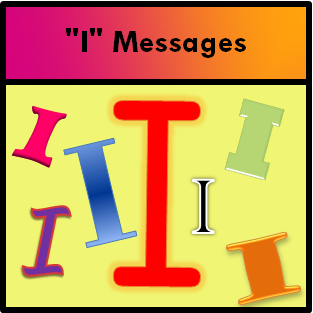Communication with children is important, especially when conveying what you want them to do or need them to do. The incredible “I” message is a very effective way to communicate with children.
Introduced in the 1970’s, “I” messages are basically a way of expressing our thoughts and emotions, using a soft voice and a statement that often begins with, “I feel…” Other examples include: “I’m upset because…” “I get angry because…” “I am excited that…”
When we use “I” messages with young children, we introduce a new viewpoint to the young child. “I” messages personalize our communication and allow adults to share their feelings with the child in a positive manner.
For an undesirable behavior, “I” messages are a better way to talk to children in a positive way, rather than using negativity. For example, you see a child throwing sand. Your first inclination might be to say “Stop throwing that sand!” Instead, try an “I” message in one of two ways:
- Tell the child what you WANT them to do, rather than what you want them NOT to do
- Share your feelings with the child about what they are doing and include a reason you feel that way
Some examples include:
| Unwanted Behavior: | “I” Message option 1: | “I” Message option 2: |
|---|---|---|
| Not cleaning up for lunch | I would like you to put away the toys now. | I feel angry that you are still playing with the toys, because other children are hungry and waiting for lunch. |
| Throwing sand | I need for you to keep the sand in the sandbox. | It scares me when I see you throwing sand, because it can get into other children’s eyes and hurt them. |
| Knocking down another child’s block tower | I want you to help Billy rebuild the tower. | When you knock down Billy’s tower, it makes me sad because he worked really hard to build it. |
| Keeps getting up from mat at nap time | I need you to stay on your mat. | I am feeling upset that you are getting up from your mat because it is quiet time and some children are trying to sleep. |
(From The Magical I-Message)
This formula isn’t really magical, but something about the “I” message appeals to a child’s better self. An “I” message is a tool for teaching children how to express feelings effectively and accurately; you are role modeling the ability to connect feelings with behavior. It is also a tool for showing trust for a child’s ability to change her own behavior. In addition, the “I” message builds on the child’s need to be accepted by those adults with whom she has a caring relationship.
Children react in different ways to “I” messages. If a child is exposed to strict, authoritarian discipline at home, an “I” message may not be forceful enough to inspire change. On the other hand, if his parents are very permissive, his sense of empathy or responsibility may not be developed enough to motivate a response.
State your “I” message in a positive, neutral voice while making eye contact, and with a sense of expectation. If the child is in danger or destroying something, remove her physically from the situation as you talk. Otherwise, give her time to respond appropriately. If you “I” message doesn’t bring change the first time, restate it more firmly.

